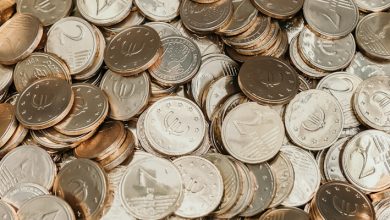How to Read Crypto Charts: Introduction to Technical Analysis

- Understanding the basics of crypto charts
- Introduction to technical analysis in the world of cryptocurrency
- Key terms and concepts in crypto chart reading
- Analyzing price movements through candlestick patterns
- Using support and resistance levels in crypto chart analysis
- Implementing technical indicators for better decision-making
Understanding the basics of crypto charts
Understanding the basics of crypto charts is essential for anyone looking to delve into technical analysis in the cryptocurrency market. Crypto charts provide valuable insights into the price movements of various digital assets, allowing traders to make informed decisions. These charts typically display price data over a specific period, such as minutes, hours, days, or weeks.
There are different types of crypto charts available, with the most common being line charts, bar charts, and candlestick charts. Line charts provide a simple representation of price movements over time, while bar charts offer more detailed information, including opening and closing prices. Candlestick charts are widely used in technical analysis due to their ability to convey a lot of information in a single view.
When reading crypto charts, it’s important to pay attention to key elements such as support and resistance levels, trendlines, and chart patterns. Support levels represent price points where a cryptocurrency is likely to find buying interest, while resistance levels indicate where selling pressure may increase. Trendlines help traders identify the direction of a price trend, while chart patterns can signal potential price reversals or continuations.
Introduction to technical analysis in the world of cryptocurrency
In the world of cryptocurrency trading, understanding technical analysis is essential for making informed decisions. Technical analysis involves studying historical price charts to predict future price movements based on patterns and trends. By analyzing charts, traders can identify potential entry and exit points, as well as support and resistance levels.
One of the key concepts in technical analysis is the use of various indicators and tools to interpret price data. These tools can help traders identify trends, momentum, and volatility in the market. Common indicators include moving averages, relative strength index (RSI), and Bollinger Bands.
Technical analysis is not foolproof, and it’s important to remember that past performance is not indicative of future results. However, by combining technical analysis with other forms of analysis, such as fundamental analysis, traders can gain a more comprehensive understanding of the market and make more informed trading decisions.
Whether you are a beginner or an experienced trader, learning how to read cryptocurrency charts and understand technical analysis can help you navigate the volatile world of digital assets. By gaining a deeper understanding of price movements and market trends, you can improve your trading strategies and increase your chances of success in the cryptocurrency market.
Key terms and concepts in crypto chart reading
When it comes to reading crypto charts, there are several key terms and concepts that you need to be familiar with in order to effectively analyze the data. Understanding these terms will help you make informed decisions when it comes to buying and selling cryptocurrencies.
- Candlestick Charts: These are the most common type of chart used in crypto trading. They provide a visual representation of price movements over a given time period.
- Support and Resistance Levels: These are price levels at which a cryptocurrency tends to stop falling (support) or rising (resistance). They are important indicators for determining potential entry and exit points.
- Trend Lines: Trend lines are used to identify the direction of a cryptocurrency’s price movement. They can help you determine whether a cryptocurrency is in an uptrend, downtrend, or trading sideways.
- Volume: Volume refers to the amount of a cryptocurrency that is being traded over a given period of time. High volume typically indicates strong market interest, while low volume may suggest a lack of interest or liquidity.
- Moving Averages: Moving averages are used to smooth out price data and identify trends over a specific time period. They can help you determine the overall direction of a cryptocurrency’s price movement.
By familiarizing yourself with these key terms and concepts in crypto chart reading, you will be better equipped to analyze and interpret price data effectively. This will ultimately help you make more informed decisions when it comes to trading cryptocurrencies.
Analyzing price movements through candlestick patterns
When analyzing price movements in crypto charts, candlestick patterns play a crucial role in understanding the market trends. Candlestick patterns are graphical representations of price movements over a specific period, typically displayed in a candlestick chart. These patterns can provide valuable insights into the market sentiment and help traders make informed decisions.
There are various types of candlestick patterns that traders can use to analyze price movements. Some of the most common patterns include doji, hammer, engulfing, and hanging man. Each pattern has its own unique characteristics and can indicate whether the market is bullish or bearish, as well as potential reversal points.
By analyzing these candlestick patterns in crypto charts, traders can gain a better understanding of price movements and make more informed decisions about when to buy or sell cryptocurrencies. It is important to remember that candlestick patterns are just one tool in a trader’s technical analysis toolkit and should be used in conjunction with other indicators and strategies for the best results.
Using support and resistance levels in crypto chart analysis
When analyzing crypto charts, one key aspect to consider is the use of support and resistance levels. Support levels are price points where a cryptocurrency often finds difficulty falling below, while resistance levels are where it struggles to rise above. These levels can provide valuable insights into potential price movements and help traders make informed decisions.
Support levels can be seen as the “floor” for a cryptocurrency’s price, as they indicate a strong level of buying interest. When the price approaches a support level, it is often seen as a good opportunity to buy, as there is a higher likelihood of a price bounce. On the other hand, resistance levels act as a “ceiling,” showing where selling pressure is strong. Traders may consider selling when the price nears a resistance level.
By identifying these key levels on a crypto chart, traders can better understand the market dynamics and anticipate potential price movements. Support and resistance levels can also help traders set stop-loss orders to limit potential losses or take-profit orders to secure profits at key points. It is essential to combine support and resistance analysis with other technical indicators to make well-informed trading decisions.
Implementing technical indicators for better decision-making
Technical indicators are essential tools for analyzing crypto charts and making informed decisions. By implementing these indicators effectively, you can gain valuable insights into market trends and potential price movements. There are various types of technical indicators available, each serving a specific purpose in helping traders interpret chart data. Some common indicators include moving averages, relative strength index (RSI), and Bollinger Bands.
Moving averages are used to smooth out price data and identify trends over a specific period. They can help traders determine the overall direction of an asset’s price movement. The RSI, on the other hand, measures the speed and change of price movements to indicate whether an asset is overbought or oversold. This information can be crucial in determining the best time to buy or sell.
Bollinger Bands are another popular technical indicator that helps traders identify potential price breakouts and reversals. By analyzing the width of the bands and the position of the price relative to them, traders can gain insights into potential market volatility. These indicators, when used in combination, can provide a more comprehensive view of market conditions and help traders make more informed decisions.
Implementing technical indicators requires a solid understanding of how each indicator works and how to interpret their signals. It’s essential to use a combination of indicators to cross-verify signals and reduce the risk of making decisions based on false signals. By mastering the use of technical indicators, you can improve your decision-making process and increase your chances of success in the crypto market.



